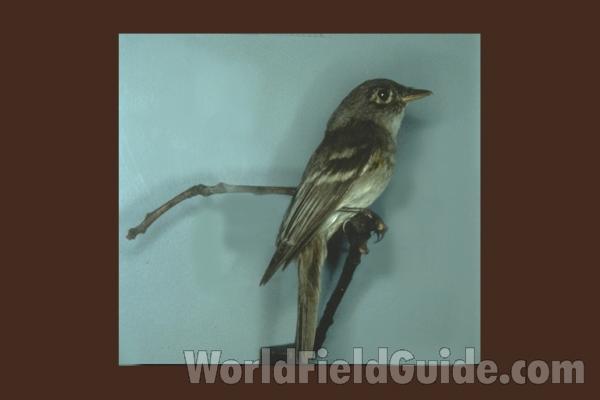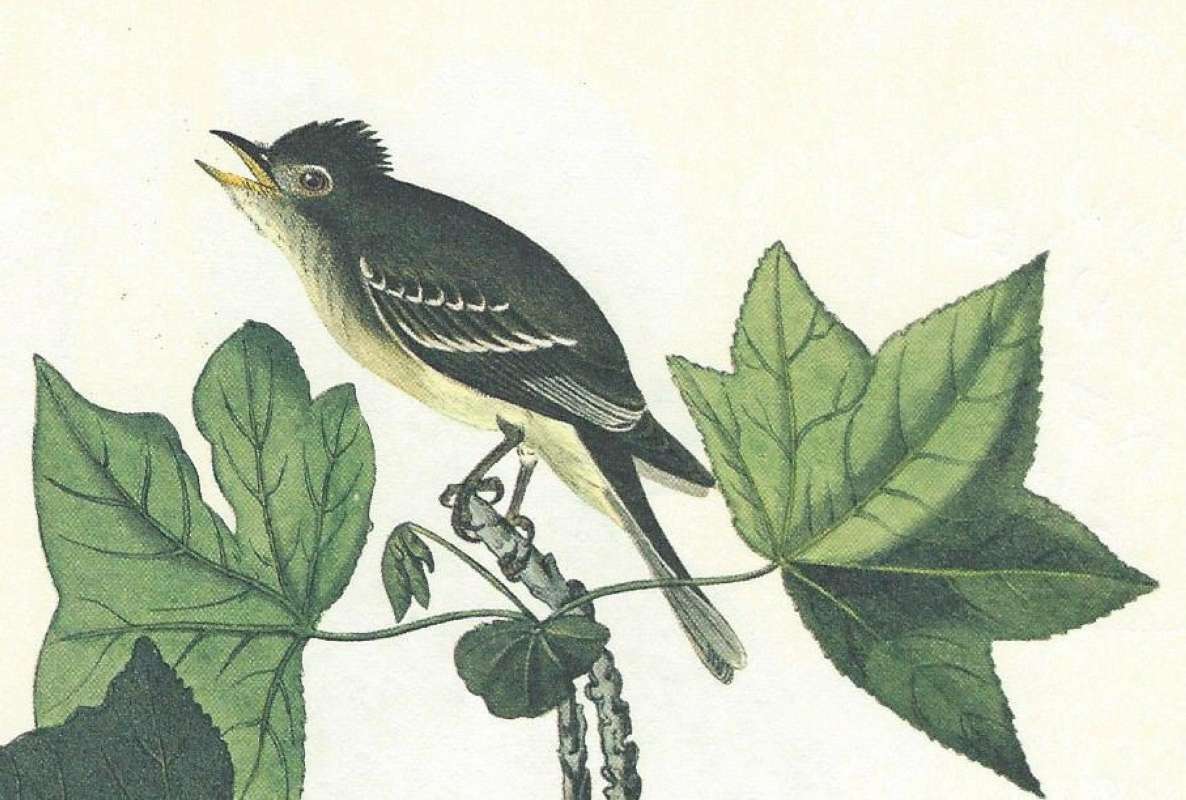SPECIES INFO
Alder Flycatcher or willow flycatcher (Empidonax traillii) breeds from Quebec to Alaska and south to Colorado and Kentucky. It migrates as far south as Ecuador. The Alder Flycatcher is an inhabitant of the marshes and wetlands. It is very similar to the other seven Empidonax found in North America, but this species tends to be a little browner.
Howard and Moore in 2003 recognized four subspecies. The subspecies brewstrei is found from southern British Columbia south to the Sierra Nevada Mountains. The subspecies adastus is found in the central Rocky Mountains into Utah and Colorado. The subspecies extimus is found in southern California and New Mexico. The subspecies traillii is found in the eastern United States and migrating to Central and South America.
Although population estimates in 2010 estimated over 3 million individuals, the trend is for a decreasing population. The extimus subspecies is listed as endangered. Cowbird control is an important issue for this species.There are eight species of Empidonax that are found in the United States. They are all somewhat similar to each other. All except the Dusky Flycatcher, Empidonax oberholseri, which breeds widely in the western half of North America are discussed and pictured here.
Tyrant Flycatchers (Tyrannidae Family) are considered a primitive group within the Perching Birds. The 539 species in this family are confined to the New World. A majority of the species are found in the tropics.
This large family can be broken down into five main portions.
The subfamily Pipromorphinae (53 sp) Central & South America.
The subfamily Tyranninae(341 sp) of North and South America.
The subfamily Tityrinae (23 sp) of the New World
The subfamily Cotinginae (69 sp) of South America.
The subfamily Piprinae (53 sp) of the New World
In most modern bird taxonomies, the perching birds (Passeriformes) is treated as a single order. This large order has about 5739 different species. A common characteristic of this order is three forward toes and one reverse pointing toe. Most of species are also characterized by a tendon locking mechanism that permits their feet to lock onto branches when they relax. Recently, Monroe and Sibley in 1993 have divided this large order into six main divisions. To help our users navigate this gigantic number of species, we have arbitrarily placed these 6 different divisions at the order level.
This division can be referred to as:
Order Passeriformes (5739 species)
Suborder Tyranni (1159 species)
Infraorder Tyrannides (1105 species)
Aves contains about 8,650 different species of living birds known to science. Each year about one new species is discovered in some remote rain forest or remote island. In addition, scientists have been raising many subspecies to full species status which may raise the species count to 10,000. Birdlife recognizes 10,027 species as of 2011.
However, each year about one species goes extinct. The rate of extinction is increasing, and the rate of new discovery is decreasing, so that the number of bird species will soon begin to decline rapidly. Although different taxonomists would organize the birds differently, there are approximately twenty-seven orders of birds. These orders are broken down into about one hundred and fifty-five different families.
Recent research of the genetic structure of some of the shore birds and owls would indicate that the present organization of orders and families should have some modification.
The birds are a worldwide group of animals that are characterized by having the front limbs modified into wings that are used for flying. Perhaps the most unique feature of the birds is the feathers. These feathers are made up of a central support called a quill and a series of small filaments that are hooked together as barbs.
For many years it was believed that Archaeopteryx discovered in Bavaria was the oldest bird from about 150 million years ago. However, in l986, Sankar Chattterjee, a Texas paleontologist, reportedly discovered a bird in the genus Protoavis that lived about 225 million years ago.
When this project was begun in 1978, we used Austin & Singer for bird taxonomy. Since then, we have adopted many changes, but have kept some older concepts that are still found widely in the literature. Recently, we have used Clements and Howard & Moore. Very recently, we have used Monroe and Sibley for the higher taxonomy of the perching birds.
Backboned Animals (Phylum Chordata) are the most advanced group of animals on earth. These animals are characterized by having a spinal cord or backbone. Most members have a clearly defined brain that controls the organism through a spinal cord. Fish, amphibians, reptiles, birds, and mammals are in this phylum.
Currently, some taxonomists believe that the fish should be divided into two groups (sharks and regular fishes) and that there are some other primitive groups in the phylum such as hagfish or lampreys.
Animal Kingdom contains numerous organisms that feed on other animals or plants. Included in the animal kingdom are the lower marine invertebrates such as sponges and corals, the jointed legged animals such as insects and spiders, and the backboned animals such as fish, amphibians, reptiles, birds, and mammals.




